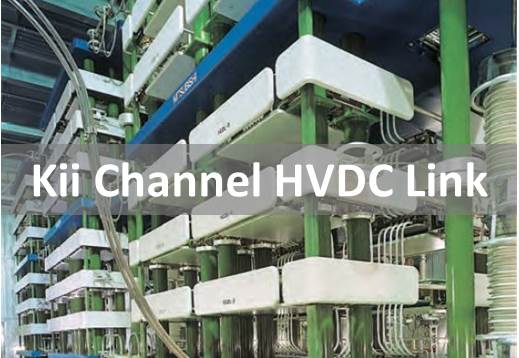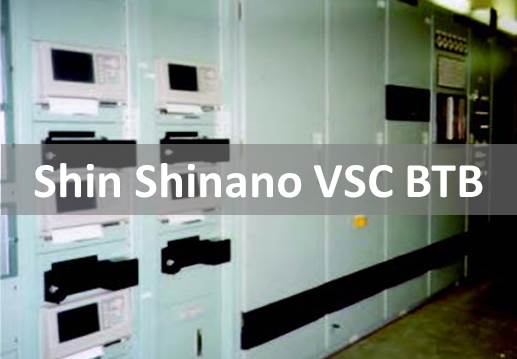HVDC Solutions
The Leader in High-Voltage Direct Current Applications
For more than 40 years, Mitsubishi Electric has been a leader in the development, design and production of high-performance power electronics-based systems. These solutions help electric utilities supply reliable, high-quality power.
The company uses its proven Insulated Gate Bipolar Transistor (IGBT) technology in its Voltage Sourced Converter (VSC)-based HVDC Diamond solutions. HVDC Diamond systems and equipment are designed in Modular Multi-Level Converter (MMC) configurations.
More Than Electric Power Transmission & Control
Beyond transmitting and controlling real power, Mitsubishi Electric’s VSC based HVDC Diamond systems can act as a Static Synchronous Compensator (STATCOM) to help utilities take some of the stress off the electrical transmission grid and supply their customers with high-quality power 24/7.
Specifically, HVDC Diamond systems can supply capacitive and inductive reactive power. This capability eliminates the need for mechanically switched capacitors and reactor banks to compensate for the MVAR requirements of conventional HVDC systems.
Mitsubishi Electric’s VSC-based HVDC solutions feature power transfer ratings in excess of 1000MW with a DC voltage level up to +/- 500kV DC.
Key features and benefits of HVDC Diamond applications include:
- Ability to Transmit & Control Real Power from Point A to Point B
- Independent Supply & Control of Reactive & Real Power
- Compatibility with Multi-Terminal Designs
- Increased Grid Accessibility for Weak Systems
- Ability to Feed into Passive Networks
- Improved Renewable Resource Integration
- Low System Losses Compared to Conventional AC Transmission
- Can be Used in Back-to-Back (BTB) Links to Control Power Flow
- Compact & Lightweight (Smaller Footprint)
HVDC Diamond solutions can also be designed with Black Start Capability to facilitate system restoration without relying on the external power transmission network.
Our Latest Breakthrough Technology for HVDC Systems Help to Improve Reliability of MMCs
The functionality and durability of HVDC Diamond Systems are enhanced further by use of the industry’s most reliable Insulated-Gate Bipolar Transistors (IGBTs). IGBT modules or cells are the “building blocks” of MMC technology which enable MMCs to deliver superior performance, resulting in higher operating efficiencies with lower losses.
Proven IGBT Device is Choice for Converter Design
The heart of an HVDC converter is the power electronic device. Because Mitsubishi Electric manufactures its own IGBT device, it has complete control over the key component of VSCs used in the company’s HVDC Diamond System. Mitsubishi Electric IGBTs have a rating of 4.5 kV/1.2 kA. More than 40,000 of the company’s IGBTs are being used in Status Synchronous Compensator (STATCOM) and HVDC applications world wide.
More about our MMC technology
Mitsubishi Electric uses Modular Multi-Level Converter (MMC) technology to produce VSC-Based HVDC Systems that are:
- Reliable
- Efficient
- Fast
- Robust
- Cost-Effective
The basic building block of the MMC is the Insulated Gate Bipolar Transistor (IGBT) sub-module cell.
Each cell features these components manufactured by Mitsubishi Electric:
- 2 IGBTs
- 2 Free-Wheeling Diodes
- DC Capacitor
- Mechanical Bypass Switch
- Voltage Sensor (power supply for Gate Terminal)
Cell Operation
Each cell contains a capacitor, along with two IGBTs and diode pairs. When one IGBT and diode pair is turned on, the capacitor is placed in series with the arm circuit. When the other pair is turned on, the capacitor is short-circuited, removing it from the circuit.
The HVDC Converter: Structure of Cell Units
In any given HVDC Converter, the number of series cells need is determined by DC voltage requirements.
Switching combinations of the upper and lower cells “build” the output waveform. These configurations result in the formation of a near-perfect sine wave on the AC side and a very
smooth voltage on the DC side, giving the cell units the ability to create an AC waveform without an AC grid connection for reference.
Key Features & Facts
- Typical converter ratings vary from 50 to 1500MW
- Typical converters will use up to 475 series cells per branch arm for a voltage up to +/- 500kV DC
- By using a coupling transformer to connect the converter to the AC transmission system, the converter may be connected with any AC voltage
- AC sine waves produced by the HVDC System have low harmonic currents
- With cascaded module arrangement of the converters, IGBTs operate at a very low switching frequency
- Converter losses are <1%
Case Studies:


